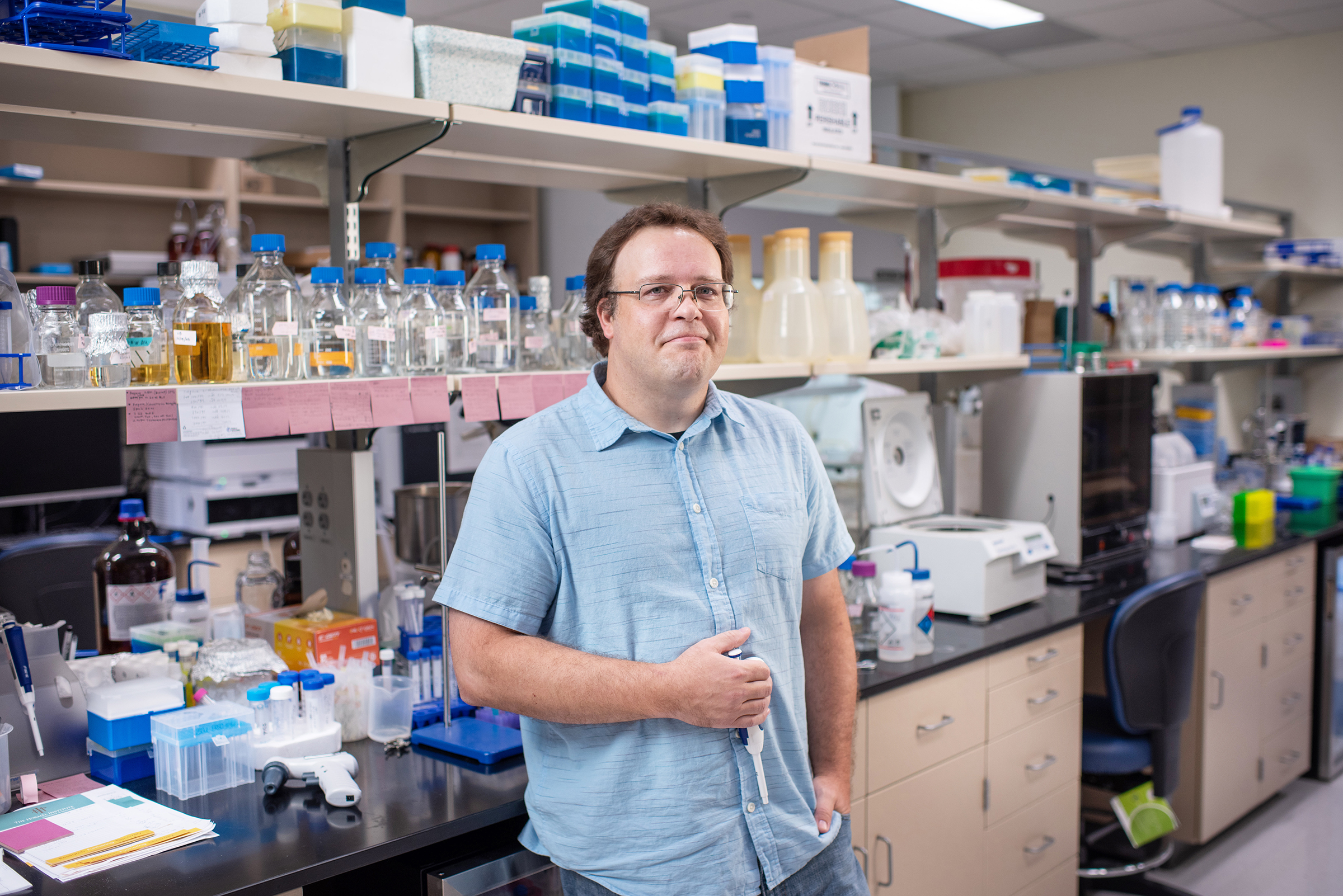
Jarrod French, PhD
Associate Professor
Our lab uses an integrative and highly collaborative approach to identify the molecular determinants of protein function and dysfunction in various physiological contexts. We are particularly interested in proteins and protein complexes that regulate metabolic processes such as nucleotide biosynthesis, the discovery and development of immunomodulatory therapies, and the mechanisms that certain photoreceptors use for signal transduction. We take a best tool for the job approach, drawing on the broad skill set of our team and the wide array of chemical, biochemical and biophysical techniques at our disposal. The overarching goal of our work is to exploit the knowledge that we obtain in these fundamental investigations to improve the standard of care for a range of devastating human diseases.
- Structure, function and cellular dynamicsof macromolecular metabolic machines. All living things require purine nucleotides; they serve crucial roles in DNA and RNA, act as neurotransmitters and are involved in the storage and transfer of energy. The proteins responsible for the de novo biosynthesis of purines were recently discovered to associate into a dynamic multi-protein mesoscale assembly called the purinosome. This molecular super-structure enables the cell to have both temporal and spatial control over metabolic flux. Our group is investigating the structural determinants and mechanistic underpinnings of this critical metabolic machine and other similar structures involved in pyrimidine metabolism. Since rapidly dividing cells require a constant supply of new nucleotides, the de novo biosynthesis of nucleotides has long been a validated target for cancer treatment. Our work is expected to provide new targets for the development of novel anti-cancer treatments that modulate purine metabolism.
- Sts-1 as a novel target to treat deadly pathogen infections (in collaboration with Nick Carpino, Stony Brook University). Sts-1 and Sts-2 are recently discovered phosphatases that act as key negative regulators of the host anti- fungal and anti-bacterial response. When in vivo lacking the Sts proteins were evaluated for susceptibility to infection by various pathogens, they were found to be profoundly resistant. We are using a highly parallel approach, including both high-throughput and structure-based screening methods, to identify and characterize inhibitors of Sts-1 as lead compounds for further drug development. We have recently miniaturized phosphatase assays, conducted a 20k compound pilot screen, and identified two classes of Sts phosphatase inhibitors (the first such inhibitors discovered). In addition, we have solved X-ray crystal structures of the phosphatase domains of both Sts-1 and Sts-2 from humans. Our current efforts are focused on, in parallel, scaling up to do a 100k compound high-throughput screen and using a structure-guided fragment-based approach to identify lead compounds for further drug development. In the long term, this work will lay the foundation for developing a combination therapy strategy that involves inhibition of Sts activity as a central component. These studies will generate lead compounds for the treatment of systemic candidiasis and other fungal/bacterial infections, and will establish a novel framework for developing therapies that rely on enhancing host immune responses. Such therapies could be useful against a wide range of human diseases.
- Structural dynamics and mechanisms of photoreceptor signaling (in collaboration with Peter Tonge, Stony Brook University, and Tony Huang, Duke University). The overarching goal of this work is to determine the molecular mechanisms that couple light absorption to the activation of downstream biological processes in flavoprotein photoreceptors. In collaboration with the laboratory of Pete Tonge at Stony Brook University, we complement static and dynamic X-ray crystallographic experiments with time-resolved spectroscopy to elucidate molecular details with a high level of spatial and temporal resolution. This work will significantly advance our understanding of fundamental signaling events and provide a foundation for optogenetic tools. We are also using our novel approach for time-resolved serial crystallography (CSAW), to obtain molecular movies of the dynamic structural features of the photoactive proteins under study. Our current work is focused on the blue light using FAD (BLUF) proteins and the Light Oxygen Voltage (LOV) class of photoreceptors.
Current research projects:
- Assembly mechanisms, regulation and function of higher order protein structures of nucleotide metabolism
- Modulation of the purine metabolic proteins, FGAMS and PPAT, to improve liver cancer prognosis
- Targeting the Suppressor of TCR Signaling (STS) proteins as a means to enhance the immune response to treat infections by deadly pathogens
- Structural Dynamics and mechanisms of BLUF and LOV photoreceptor signaling
- Identification and characterization of novel nucleobase transport proteins
- Structure and function of a herpesvirus tegument protein that co-opts purine metabolic proteins to avoid the host immune response
